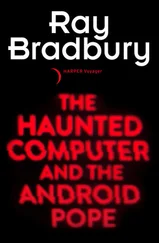Hudson Soft really got off the ground when Kudo made deals to provide software for such major hardware manufacturers as Sharp, Panasonic, and National. These manufacturers distributed Kudo’s software with their machines (an arrangement known, colorfully enough, as “bundling”), and as a result he never had any reason to build his own distribution network. But in 1981, he met someone who persuaded him to change his mind—another software entrepreneur named Jung-Eui Son, who was a student at Berkeley. A discussion about Son is appropriate here, for his story is closely linked to Kudo’s and others’.
In 1980, while Son was studying economics at Berkeley, he devised a business plan for a portable language translator, then hired a University of California physics professor to build him a prototype. Son took the translator to Japanese hardware manufacturers and sold the idea to Sharp, which gave him a fair amount of operating capital. Son then formed a software publishing company, Unison World, which still exists in wonderfully mutated form in Berkeley. Then, in 1981, when he returned to Tokyo, Son started a software distribution company called Soft Bank.
When Soft Bank began to dwarf his software publishing business, Son sold Unison to another Berkeley student by the name of Hong Lu. An energetic and amiable fellow who was in his mid-twenties when he acquired the company, Lu now occupies a ninth-floor suite with a panoramic view of the Berkeley hills. In the warren of programming and brainstorming rooms outside Lu’s office, is one of the largest and most determined collection of eighteen-year-old hackers west of the Charles River. What with wild-haired and wild-eyed teenage programmers mingling with delegations of Chinese computer scientists, and development models of next year’s Japanese computer hardware locked away in small cubicles from which the sound of punk rock is often heard, Unison’s office has indeed become a kind of software carnival to behold.
But Unison was only a sideline as far as its founder was concerned. Son’s jackpot was Soft Bank. His most brilliant move after establishing his distribution company was to identify and enlist the real star in Japanese software, Yuki Kudo, then persuade him to let Soft Bank handle Hudson Soft’s distribution. It was a beneficial arrangement to both parties, to say the least. Both Kudo and Son were still in their twenties when they made the deal that would earn them small fortunes in a few years.
After settling on this exclusive distributorship for Hudson Soft, the hottest software publisher in the country, Son then went to a company called Joshin Denki, which sold around 10 percent of all software sold in Japan, and cut an exclusive deal to sell Soft Bank’s software in its stores. A distributor can’t do much better than to have the largest chain of stores in the country in one pocket and the best software company in the other.
It would be nice, however, also to have advertising in the big, colorful hobbyist magazines like I/O and ASCII. But both magazines were either involved in software publishing, (ASCII) or planned to get into it eventually (I/O) and saw Soft Bank as a potential competitor, so they wouldn’t take Son’s advertising. Son reacted by starting his own magazines; he enlisted major hardware manufacturers to finance magazines dedicated strictly to their machines. Then he ran his own ads for free. Eventually at least one of Son’s competitors changed its policy toward him. By 1984, Soft Bank was distributing ASCII ’s software. Needless to say, ASCII magazine also began carrying Soft Bank’s advertising.
Soft Bank is now the biggest microcomputer software distributor in Japan. Around 70 percent of the micro software in Japan is sold through distributors, and around 70 percent of the distributed software is sold through Soft Bank. This means that Son controls around half the software sales in Japan—a far higher share of the market than Leff and Wagman’s Softsel controls in the United States. Although Kudo didn’t mention it to me when I talked to him about his and Son’s history together, Son told me that Kudo bailed out Soft Bank in the early days when they were out of money. Son also mentioned that Kudo is one of seven people who are honored at an annual company thanksgiving festival in gratitude for helping Soft Bank attain its dominance of the market.
Kudo has certainly shared in his friend Son’s success. At first, more than 80 percent of Soft Bank’s sales were Hudson Soft products, but Kudo’s share of the overall market has since dropped to around 35 percent. The reduced market share doesn’t necessarily mean reduced revenue for Hudson Soft, however, because the size of the software market in Japan keeps growing at such a phenomenal rate. (Does this sound like a familiar story?) Hudson Soft has about one hundred employees now. It is starting direct sales and has purchased a distribution company.
Not all such partnerships between the early microcomputer hobbyists ended up as amicably as Kudo and Son’s. Consider, for instance, the tangled histories of three other important figures in the Japanese software culture: Masaaki Hoshi, Akio Gunji, and “Kay” Nishi. Their story is an example of how businesses as well as people seem to be more closely interconnected in Japan than in the United States.
In Japan, the distinctions between magazine publishers and software publishers, and between publishers and distributors, are not as clearly defined as they are in the United States. Besides ASCII, such companies as ENIX and Joshin Denki distribute or retail as well as publish as software. In the beginning, Hoshi, Gunji, and Nishi were involved in magazine publishing as a labor of love. The lure of big money was remote from their most immediate and driving interests. In fact, Gunji and Nishi were volunteer writers who wrote for Hoshi’s magazine I/O for free until they started their own magazine, ASCII. The ultimate fate of their association is still a matter of dispute.
Hoshi started I/O in late 1976 as a service to the small but rapidly growing number of Japanese hobbyists who, like Kudo, wanted to get their hands on microcomputer hardware and software. At the time, he was working for a publishing company that produced technical documents for scientific and commercial customers. The first issue of I/0 —at the beginning, little more than a catalogue—was only thirty-six pages long, and only 3000 copies were printed. It was respectable for a hobbyist publication, but nothing to base an industry on. The number of subscribers was up to 6000 by the second issue, however, and grew to 12,000 by the third issue. Hoshi quit his job and took over full-time management of his magazine business.
Money, in ever-increasing amounts, began flowing in from what had started out as an avocation. Now that he had a healthy subscriber base, Hoshi hired people to contact advertising prospects—who in turn were eager to present their products through this unique medium. When some of the hobbyists started their own companies, they turned to the established magazines as their primary means of reaching their market. One of the first of these early companies was Hudson Soft.
The raw enthusiasm of microcomputer hobbyists worked to Hoshi’s benefit. One of the keys to his early success with the magazine was the fact that he found himself with a large business and a very small staff. Hoshi was knowledgeable enough to handle the publishing operation himself. All he needed to do was hire people to sell advertising. Scientists, engineers, and other hobbyists were only too happy to provide articles for free. Which is where Nishi and Gunji entered the scene. While still a student at Waseda University, Nishi became a volunteer contributor to I/O , after having spent some time just hanging around the magazine’s headquarters and looking for ways to put his love for microcomputers to constructive use. When his friend Akio Gunji was out of a job, Nishi suggested that he, too, write articles for I/O, which Gunji did. At this point the disputed section of the history of these three men begins.
Читать дальше










